
On May 17, members of
NCAApHC were invited to a free clinic given by Glenn Reed, long time non pro reining exhibitor.
The methods Reed uses to teach his horses to do reining maneuvers can benefit all horses, no matter what your chosen discipline. By getting you and your horse good at these moves, you will have an enjoyable, well trained horse to ride.
The goal in all moves is to get your horse to respond to progressively lighter cues. He must also do what he is asked until you tell him to do something else.
Always remember...
Ask, tell, demand. Ask first, then tell your horse, then demand if he has not responded. Once your horse responds to your cue, eventually he should learn that it's easier on him to respond to the lighter cue. You will undo all attempts to get your horse 'light' if you continue to ask him at the demand level once he is responding to lighter cues.
Start out with light pressure, giving your horse the chance to respond before increasing pressure. Once there is even the slightest hint that he is trying to respond, release. The release is his reward. The goal is to get your horse to respond to the lightest cue.
Every time you are on your horse, you make the decisions. Do not allow your horse to do or go wherever or whenever he chooses. Always remember that "whoa" means stop. It does not mean slow down or just pause. It means stop all four feet and not move until told to.
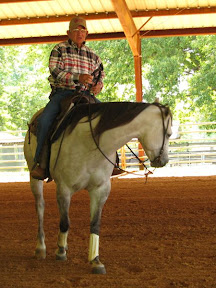 | Flex - Reach down a rein, then slowly pull your horse's head to the side.
- Rest your hand on your thigh as an anchor.
- When your horse puts slack in the rein, immediately let go.
- Repeat on other side.
This teaches your horse to be very light in the mouth. It is also a good thing to do when you want to get your horse's mind on you. |
 |
When starting to teach your horse to flex, he may move off to follow his head. That's ok. If you are not giving leg cues, he will soon learn that his feet should stay still.
Work up to flexing your horse's head side to side while moving. This is the beginning of isolating and controlling each part of your horse's body. |
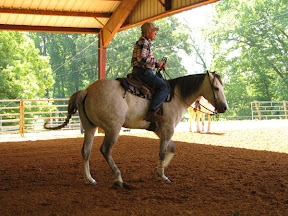 | Give Behind - Hold reins steady to discourage forward motion.
- Put right heel slightly behind girth and apply steady pressure.
- Stop giving pressure as soon as the horse moves his back end away from your heel.
- Repeat on other side.
One or two steps at first is good. Wait a second before trying again. Work up to a full circle. |
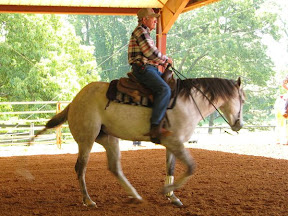 | Give in Front - Hold reins steady to discourage forward motion.
- Put right heel more forward than you did for behind give, and apply pressure.
- Stop giving pressure as soon as your horse steps over in front.
- Repeat on other side.
|
 | Back Up - Hold reins steady.
- Push your heels down and feet forward in the stirrups.
- Increase pressure on reins until your horse moves back.
- Ease the pressure on the reins as soon as your horse starts to back, but keep heels down and feet forward.
- Return legs to normal position when you want to stop backing.
|
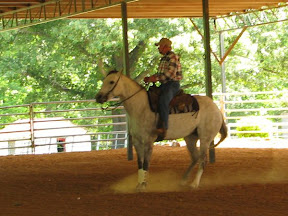 | Whoa
The cue for whoa is the same as for back up. Push heels down and feet forward in stirrups, and increase pressure on the reins. Continue holding reins and leg position until your horse backs up if he did not stop immediately. Soon your horse will stop without needing to apply pressure to the reins. Because he will learn to expect the back up, he will plant his rear end. |
 | Spin - Hold reins in both hands.
- Ask your horse to walk in a circle, using inside rein pressure, outside heel.
- Make your circles get progressively smaller and smaller.
- When you want the horse to stop forward motion, take slack out of outside rein and put it against the horse's neck. This is the beginning of the spin in place.
|
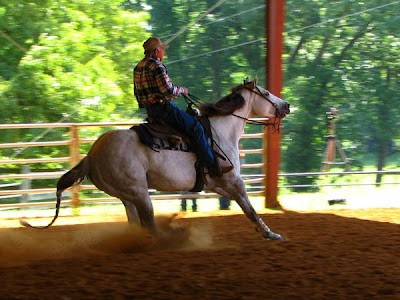
 On May 17, members of NCAApHC were invited to a free clinic given by Glenn Reed, long time non pro reining exhibitor.
On May 17, members of NCAApHC were invited to a free clinic given by Glenn Reed, long time non pro reining exhibitor.








Excellent pictures and explanation! Must have been a great clinic.
ReplyDeleteDeanna
Thank you, Deanna. I recommend Improving Communication Between Horse and Rider for more specific details on riding.
ReplyDeleteIt was fun! A man was on a Percheron, and it was pretty cool to see that horse do a reining spin!
Theresa